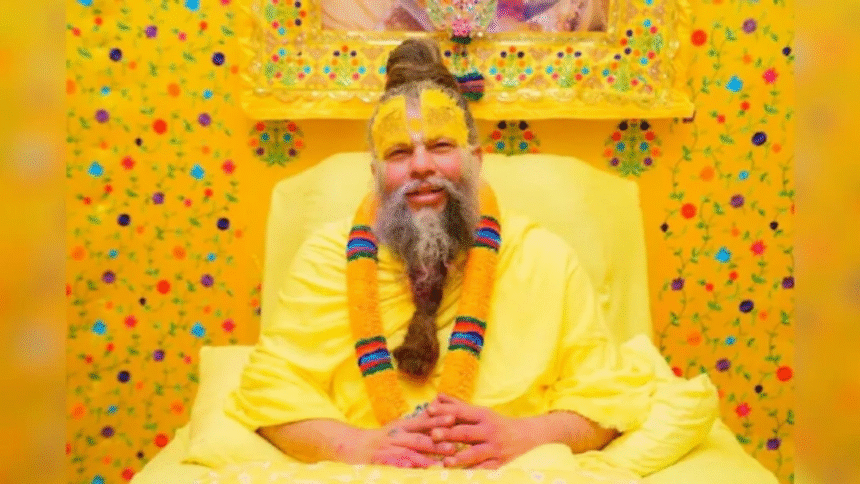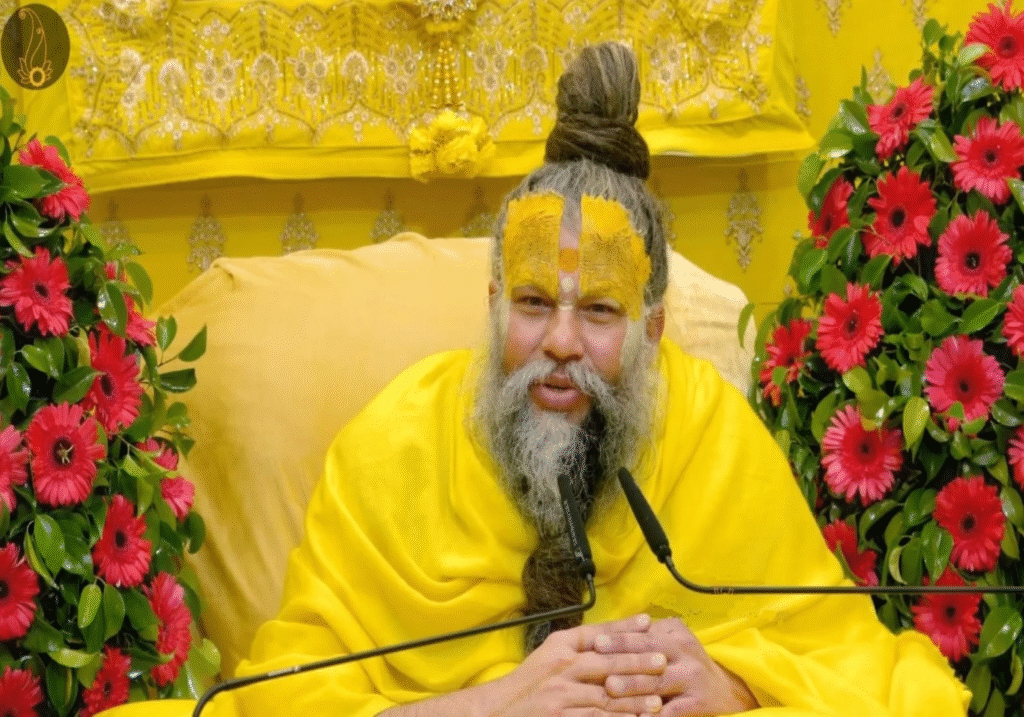Imagine seeing a video of your spiritual guru saying something completely out of character. Or hearing their voice deliver a message they never spoke. Sounds creepy, right? That’s exactly what’s happening in Vrindavan. Revered saint Premanand Maharaj, a well-known spiritual figure, has become a victim of deepfake technology—where AI manipulates audio, video, and photos to create disturbingly realistic fakes. And this incident is not just alarming; it’s a wake-up call. The Premanand Maharaj Deepfake controversy has shaken the spiritual community and exposed the dark side of AI misuse.
What Exactly Happened in Vrindavan?
The peaceful lanes of Vrindavan, usually echoing with devotional chants and spiritual energy, are now buzzing with concern. Recently, manipulated videos, photos, and audios of Premanand Maharaj began circulating on social media platforms. These AI-generated clips depict the saint saying and doing things he never did. That’s right—Artificial Intelligence was used to create fake content featuring the Maharaj.
Kelikunja Ashram Steps In With a Cautionary Message
In response to this disturbing trend, Kelikunja Ashram, where Premanand Maharaj resides, issued a public warning. The message? Simple and clear: “Don’t believe everything you see online.”
According to the statement, numerous unauthorized videos and photos of Maharaj are being shared that were never approved or created by him. Devotees have been urged to only trust content shared on official, verified platforms managed by the Ashram. This move is not just a defensive action—it’s an appeal to safeguard faith and truth in the digital age. The Premanand Maharaj Deepfake situation is now a case study in how AI threatens not just privacy but religious trust.
What Is a Deepfake, Anyway?
Let’s break it down. A deepfake is a form of digital deception where AI is used to alter or entirely fabricate content—like swapping faces in videos, mimicking voices, or generating completely synthetic photos. And the scary part? It often looks frighteningly real.
In Maharaj’s case, AI tools were used to manipulate his voice and image, potentially making him appear to support views or say words he never did. For thousands of followers, this isn’t just misleading—it’s deeply disrespectful and emotionally distressing.
Why Is This a Big Deal for Devotees?
For spiritual followers, faith is everything. Saints like Premanand Maharaj aren’t just teachers; they’re spiritual lifelines, guiding souls toward peace, devotion, and dharma. Any attempt to twist their message or distort their image is a direct attack on religious sentiments.
Now imagine being a devotee, coming across a video where your guru seems to behave or speak in ways completely unlike him. Confusion, heartbreak, and distrust follow. That’s the real damage—not just technical, but spiritual and emotional. The Premanand Maharaj Deepfake isn’t just fake content—it’s an emotional ambush for his devotees.
The Broader Problem: Deepfakes Are Spreading Like Wildfire
Maharaj’s case isn’t isolated. Across India—and the world—prominent personalities have been targeted with deepfakes. From celebrities to politicians, no one is immune. AI tools are getting more advanced, making it easier than ever to create hyper-realistic fake videos and audios.
And while a meme might seem funny at first, the reality is far darker. Deepfakes are being used to:
- Spread misinformation
- Damage reputations
- Incite social unrest
- Manipulate public opinion
The Premanand Maharaj Deepfake only scratches the surface of a much bigger digital crisis that’s unfolding globally.
It’s Not Just an Online Prank—It’s a Crime
Let’s be clear: manipulating someone’s image or voice without permission is illegal. According to cybercrime laws in India and across the globe, creating or sharing deepfake content without consent can lead to severe legal consequences.
Kelikunja Ashram has rightly pointed out that this isn’t just unethical—it’s unlawful. They’ve also appealed to the culprits behind these digital forgeries to stop such activities and refrain from sharing or supporting fake content. The sanctity of religious figures deserves respect, not exploitation.
How to Protect Yourself From Deepfake Deception
In a world where seeing is no longer believing, you’ve got to stay sharp. Here are some simple ways to spot and avoid deepfakes:
- Check the Source: Only trust official platforms—especially when it involves public figures or saints.
- Look Closely: Deepfake videos often have glitches, unnatural lip-sync, or odd blinking patterns.
- Use Verification Tools: AI tools and browser extensions are available that can help detect manipulated content.
- Report It: If you find fake content, report it to the platform and inform the concerned authority.
With cases like the Premanand Maharaj Deepfake surfacing, digital literacy is not optional—it’s essential.
The Responsibility Lies With All of Us
This isn’t just about Maharaj. It’s about how technology is challenging truth. As users, it’s our collective responsibility to ensure we’re not unintentionally spreading lies. Don’t forward every video you see. Don’t trust every image that goes viral. And most importantly, don’t fall into the trap of assuming “If it’s online, it must be true.”
Legal Actions and Global Efforts Against Deepfakes
Countries around the world are waking up to the threat of deepfakes. Laws are being framed to punish misuse of AI, especially in cases involving defamation or emotional damage. India, too, is tightening its cyber laws to tackle this growing menace.
However, legislation alone isn’t enough. Public awareness is key. And stories like the Premanand Maharaj Deepfake serve as a stark reminder of why we need to be vigilant.
Faith Deserves Protection, Not Manipulation
The digital world might be expanding, but so are the dangers that come with it. While AI has immense potential to transform lives for good, its misuse in the form of deepfakes is undermining truth, trust, and spiritual harmony.
Let’s remember: just because something looks real, doesn’t mean it is. And in the sacred world of faith, that line between real and fake should never be blurred.
Read More: HDB Financial Services IPO: India’s Largest NBFC Public Issue Set for June 25–27
Conclusion
Premanand Maharaj Deepfake, In this age of artificial intelligence, truth needs more defenders than ever. Saints like Premanand Maharaj represent purity, faith, and guidance. When their image is twisted by tools like deepfake technology, it’s not just a digital scam—it’s a spiritual assault.
Let’s do our part. Stay alert, stay skeptical, and always choose truth over trend. Trust only authorized platforms, and be the digital disciple that today’s age needs.






